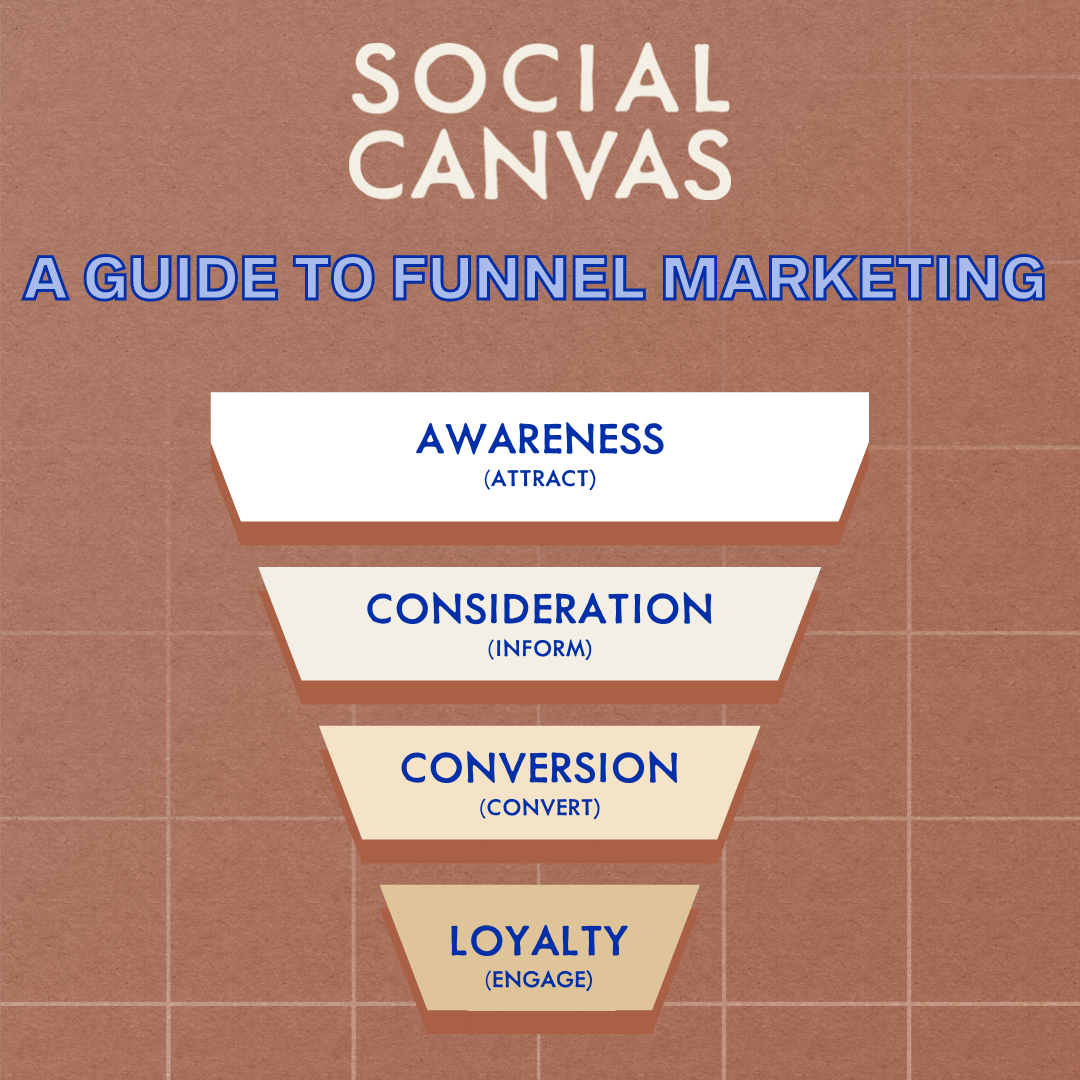
3 Must Haves for Your Sales Funnel

Having a “funnel” can be a hot-topic in the world of business, but with how often it gets thrown around, there can be some confusion as to what it actually means.
Capitalizing on this vital tool is an absolute must for business owners. The strength of your marketing funnel will directly determine how many deals you’re closing. So, let’s talk about what a ‘funnel’ actually is, and the three most important elements you need to have in place.
The marketing funnel is a concept used to describe the different stages customers go through on their path to purchase. Understanding the buyer's journey allows you to implement more effective strategies along the way.
There are multiple stages to the marketing funnel, each with corresponding goals and key recommended elements to nurture the lead down the path to a sale.\
1. Attract (Awareness)

Stage Description: This is the mouth of the funnel, where you’ll be trying to get the most people in the door. The simple goal is to put your brand on people’s radar.
Key Element: The most valuable thing here is a lead magnet that actually provides value to your target audience. The point of a lead magnet is to entice someone onto your list with a free offer that aims to address their pain point(s). Having a strong lead magnet is how you will get people into your list
How to Do It: Lead Magnet
Make a list of your target audience's pain points — be specific.
Then, brainstorm some ways in which you can address a smaller manifestation of that pain point, thus building their trust and confidence in your paid offer.
This usually looks like a PDF guide or one-pager, a short video, a list of resources, or an assessment.
In order to access the resource, they need to input their contact info. Make sure to separate the first and last name fields, so that you can properly populate their name in your email marketing down the line.
Design a nice little thumbnail, a one or two sentence description of this free resource, and a compelling CTA to ’sell’ it.
2. Consideration (Inform)
Stage Description: In the second stage of the marketing funnel, potential customers are looking for more detailed information about your brand and the products/services it offers. That’s why this step is all about informing and building a rapport.
Key Element: The best way to inform your audience is through a welcome series. Email marketing can have an ROI as high as 4400% (or $44 for every $1 spent), so it’s a great investment of time and money. Just make sure that your emails always have a fitting call to action.
How to Do It: Welcome Series
Determine the cadence (usually I’d recommend weekly or bi-weekly — not more than one email per week as this can feel overtly salesy or spammy).
Build an outline, accounting for about 3 or 4 emails, which will be automatically sent when someone signs up for your list (ie. downloads your lead magnet).
The content of each email depends on the nature of your business, but here are some general tips. Keep your content clear and concise. Touch on pain points and lead with hooks when possible. Leverage CTAs strategically and know that a sales CTA is more effective towards the end of the series. Make a compelling case for the need and urgency to resolve the challenges your potential client is facing. Paint a picture, use key stats, link your portfolio, include testimonials, etc.
3. Conversion (Convert)
Stage Description: This stage, (you guessed it!) is where leads get converted to sales. This happens in a variety of ways, depending on the industry.
Key Element: Since most sales happen online, it's critical to build a good website. It should be easy to navigate and up to date. If your sales are set up to take place on your website, your goal is ultimately to drive traffic from all other marketing channels to your website. Once your leads are on your site, the work is far from done. This is the make-or-break point of consumer/brand interaction. The truth is, 88% of people don’t return to a website after having a bad experience, which means they go to your competitors instead. If your website isn’t in tip top shape, it will cost you sales.
How to Do It:
When it comes to building an effective website, there are three key components that you need to take into consideration: raw content, visual design, and functionality.
Raw Content: This is the actual information and text that is on your site. This is where you should begin — make a doc with all the info laid out clearly and concisely, and in your brand’s tone of voice.
Visual Design: This is what will catch people’s eye, and it should always be in line with your branding. Font, colors, and graphics are all extensions of your brand.
Functionality: This includes whether buttons are easy/difficult to find, whether there’s an annoying pop up window that just won’t go away, whether things flow logically from one page to another, whether there are glitches or loading errors, and so on.
4. Loyalty (Engage) — Bonus!
Stage Description: This is a sort of bonus stage, as it comes post-sale, but its value should never be underestimated. The final portion of the funnel is dedicated to getting return customers, who not only continue to be a source of repeat purchases, but who can become a reliable referral source as well.
Key Element: Provide an outstanding service and client experience.
How to Do It: Focus on building relationships with your clients, providing excellent customer service, asking for testimonials or feedback, and staying in touch. This increases the likelihood of your clients remaining loyal, spreading the word, and continuing to support your brand.
The goal is to nurture each lead all the way through the funnel, so that they become loyal customers and vocal advocates of your brand. By building out an enticing lead magnet, a strategic welcome series, an optimized website, and an outstanding client experience, your marketing funnel should be well equipped to bring in business.
If you want help in developing an effective sales funnel, or any of the elements along the way, I’d be happy to help. Social Canvas is a full-service marketing agency, and we generate results like 119% increase in consultations, 85% increase in monthly revenue, and 922% ROI. I’d love to chat about getting your digital marketing optimized.
Filter by Category
Filter by Date
© 2017-2024 ~ Sharon Ringier Consulting ~ All Rights Reserved.
Website Terms & Conditions | Online Privacy Policy




